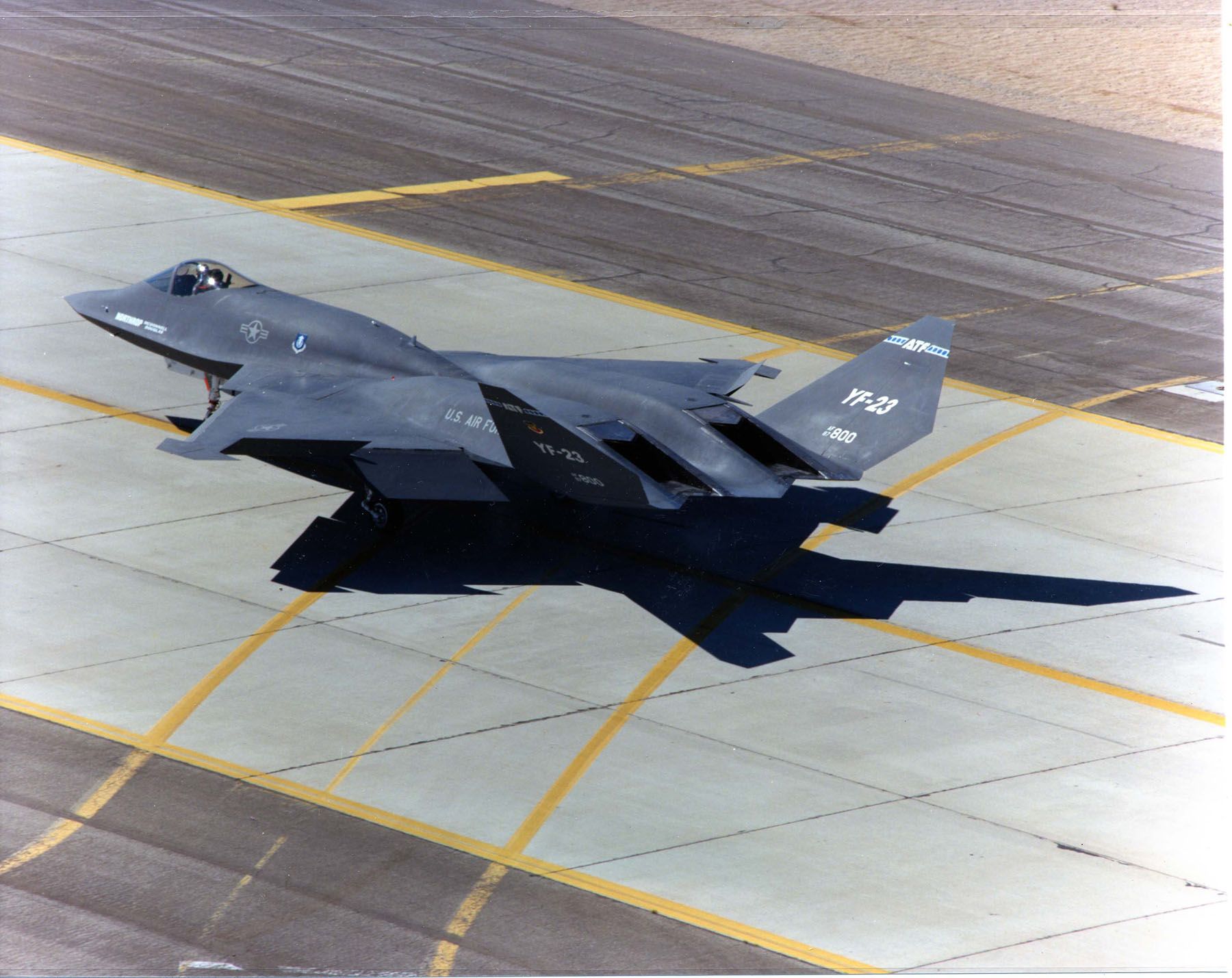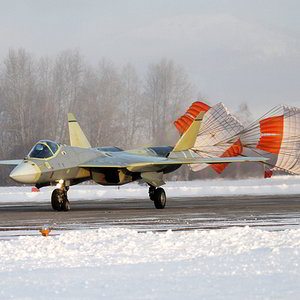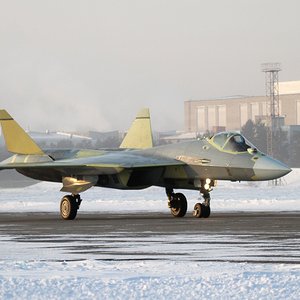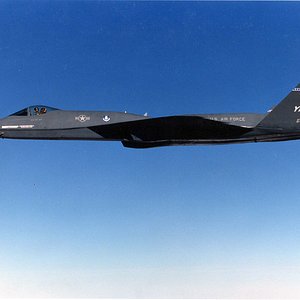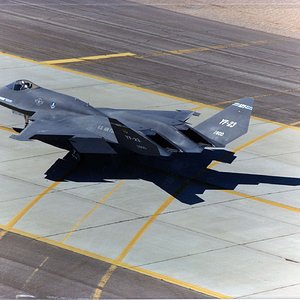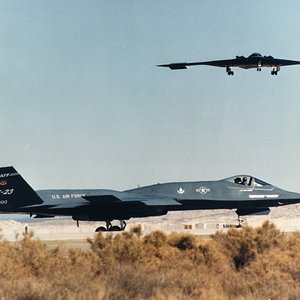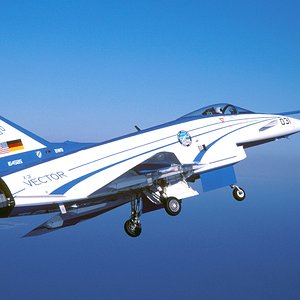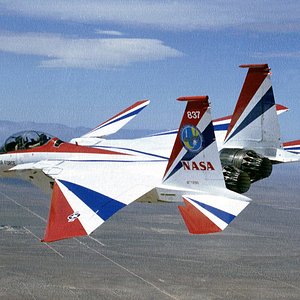Navigation
Install the app
How to install the app on iOS
Follow along with the video below to see how to install our site as a web app on your home screen.
Note: This feature may not be available in some browsers.
More options
You are using an out of date browser. It may not display this or other websites correctly.
You should upgrade or use an alternative browser.
You should upgrade or use an alternative browser.
Design
A front view of 87–0801 showing the curving exterior of the design.
The YF-23 was an unconventional-looking aircraft, with diamond-shaped wings, a profile with substantial area-ruling to reduce drag at trans-sonic speeds, and an all-moving V-tail. The cockpit was placed high, near the nose of the aircraft for good visibility for the pilot. The aircraft featured a tricycle landing gear configuration with a nose landing gear and two main landing gear. The weapons bay was placed on the underside of the fuselage between the nose and main landing gear.[20] The cockpit has a center stick and side throttle.[21]
It was powered by two turbofan engines with each in a separate engine nacelle on either side of the aircraft's spine.[22] Of the two aircraft built, the first YF-23 (PAV-1) was fitted with Pratt & Whitney YF119 engines, while the second (PAV-2) was powered by General Electric YF120 engines. The aircraft featured fixed engine nozzles, instead of thrust vectoring nozzles as on the YF-22.[12] As on the B-2, the exhaust from the YF-23's engines flowed through troughs lined with heat-ablating tiles to dissipate heat and shield the engines from infrared (IR) missile detection from below.[11]
The flight control surfaces were controlled by a central management computer system. Raising the wing flaps and ailerons on one side and lowering them on the other provided roll. The V-tail fins were angled 50 degrees from the vertical. Pitch was mainly provided by rotating these V-tail fins in opposite directions so their front edges moved together or apart. Yaw was primarily supplied by rotating the tail fins in the same direction. Deflecting the wing flaps down and ailerons up on both sides simultaneously provided for aerodynamic braking.[23]
To keep costs low despite the novel design, a number of "off-the-shelf" components were used, including an F-15 nose wheel, F/A-18 main landing gear parts, and the forward cockpit components of the F-15E Strike Eagle
A front view of 87–0801 showing the curving exterior of the design.
The YF-23 was an unconventional-looking aircraft, with diamond-shaped wings, a profile with substantial area-ruling to reduce drag at trans-sonic speeds, and an all-moving V-tail. The cockpit was placed high, near the nose of the aircraft for good visibility for the pilot. The aircraft featured a tricycle landing gear configuration with a nose landing gear and two main landing gear. The weapons bay was placed on the underside of the fuselage between the nose and main landing gear.[20] The cockpit has a center stick and side throttle.[21]
It was powered by two turbofan engines with each in a separate engine nacelle on either side of the aircraft's spine.[22] Of the two aircraft built, the first YF-23 (PAV-1) was fitted with Pratt & Whitney YF119 engines, while the second (PAV-2) was powered by General Electric YF120 engines. The aircraft featured fixed engine nozzles, instead of thrust vectoring nozzles as on the YF-22.[12] As on the B-2, the exhaust from the YF-23's engines flowed through troughs lined with heat-ablating tiles to dissipate heat and shield the engines from infrared (IR) missile detection from below.[11]
The flight control surfaces were controlled by a central management computer system. Raising the wing flaps and ailerons on one side and lowering them on the other provided roll. The V-tail fins were angled 50 degrees from the vertical. Pitch was mainly provided by rotating these V-tail fins in opposite directions so their front edges moved together or apart. Yaw was primarily supplied by rotating the tail fins in the same direction. Deflecting the wing flaps down and ailerons up on both sides simultaneously provided for aerodynamic braking.[23]
To keep costs low despite the novel design, a number of "off-the-shelf" components were used, including an F-15 nose wheel, F/A-18 main landing gear parts, and the forward cockpit components of the F-15E Strike Eagle

